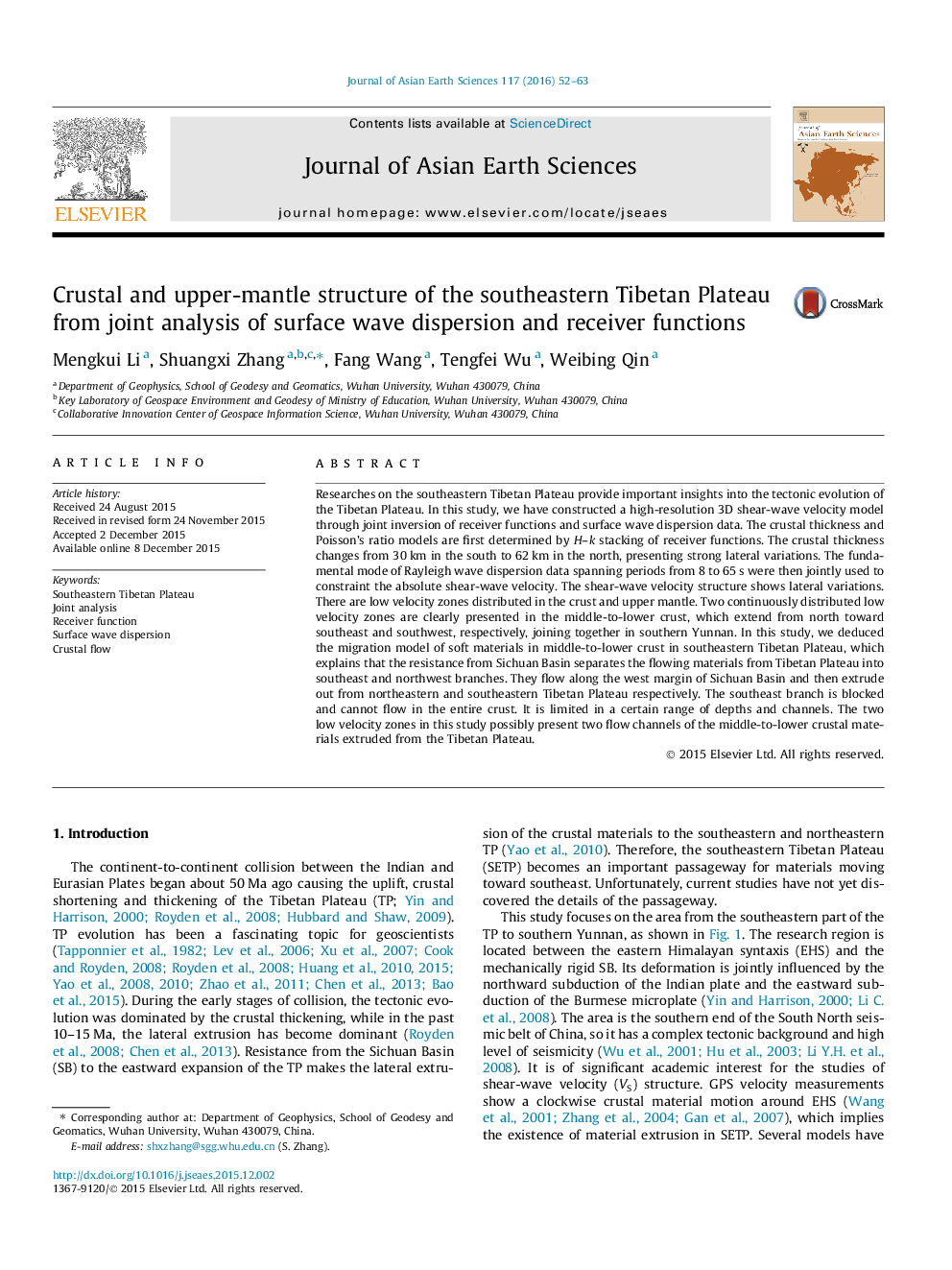| Article ID | Journal | Published Year | Pages | File Type |
|---|---|---|---|---|
| 4730174 | Journal of Asian Earth Sciences | 2016 | 12 Pages |
•The crustal thickness and Poisson’s ratio models are proposed from H–k stacking.•The basement of Simao block belongs to the Gangwana plate.•A 3D shear-wave velocity structure model is constructed though joint inversion.•A migration model is proposed for middle-to-lower crustal materials in the study region.
Researches on the southeastern Tibetan Plateau provide important insights into the tectonic evolution of the Tibetan Plateau. In this study, we have constructed a high-resolution 3D shear-wave velocity model through joint inversion of receiver functions and surface wave dispersion data. The crustal thickness and Poisson’s ratio models are first determined by H–k stacking of receiver functions. The crustal thickness changes from 30 km in the south to 62 km in the north, presenting strong lateral variations. The fundamental mode of Rayleigh wave dispersion data spanning periods from 8 to 65 s were then jointly used to constraint the absolute shear-wave velocity. The shear-wave velocity structure shows lateral variations. There are low velocity zones distributed in the crust and upper mantle. Two continuously distributed low velocity zones are clearly presented in the middle-to-lower crust, which extend from north toward southeast and southwest, respectively, joining together in southern Yunnan. In this study, we deduced the migration model of soft materials in middle-to-lower crust in southeastern Tibetan Plateau, which explains that the resistance from Sichuan Basin separates the flowing materials from Tibetan Plateau into southeast and northwest branches. They flow along the west margin of Sichuan Basin and then extrude out from northeastern and southeastern Tibetan Plateau respectively. The southeast branch is blocked and cannot flow in the entire crust. It is limited in a certain range of depths and channels. The two low velocity zones in this study possibly present two flow channels of the middle-to-lower crustal materials extruded from the Tibetan Plateau.
